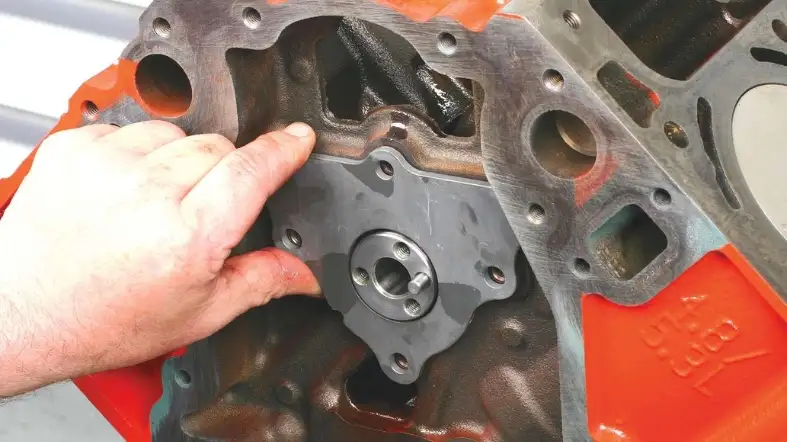Introduction

Image: www.youtube.com
In the intricate world of automotive engineering, the camshaft stands as a pivotal component, orchestrating the rhythmic dance of valves within an internal combustion engine. While traditionally perceived as an intricate task reserved for seasoned mechanics, removing a camshaft without dismantling the entire engine is indeed feasible for the intrepid DIY enthusiast. This comprehensive guide will illuminate the intricate steps involved, empowering you with the knowledge and confidence to tackle this formidable undertaking.
Understanding the Camshaft
The camshaft, a cylindrical marvel crafted from hardened steel, resides within the engine block. Its primary function lies in coordinating the opening and closing of intake and exhaust valves, ensuring the timely admission and expulsion of gases essential for combustion. The camshaft’s design incorporates lobes, eccentric protrusions that engage with valve lifters or rockers, transmitting motion to the valves.
Preparing for Camshaft Removal
Before embarking on this endeavor, thorough preparation is paramount. Safety should be your guiding principle; always disconnect the vehicle’s battery and allow ample time for the engine to cool down. Gather the necessary tools, including an assortment of wrenches, sockets, screwdrivers, and specialized camshaft removal tools if required.
Step-by-Step Camshaft Removal
1. Remove Peripheral Components
Begin by dismantling components that impede access to the camshaft. This typically involves removing valve covers, timing belt or chain, distributor, and any other obstructing parts. Consult your vehicle’s service manual for specific instructions.
2. Position the Engine
Rotate the crankshaft to align the timing marks, ensuring the engine is at top dead center (TDC). This precise alignment is crucial for proper camshaft removal and reinstallation.
3. Unbolt Camshaft Caps
Locate the camshaft caps, typically secured by bolts or studs. Carefully remove the caps, paying close attention to their orientation and arrangement. It’s advisable to label each cap to facilitate reinstallation in the correct sequence.
4. Withdraw Camshaft
With the caps removed, gently slide the camshaft out of the engine block. Avoid sudden movements or excessive force to prevent damage to the camshaft or adjacent components.
5. Inspect and Clean
Once extracted, thoroughly inspect the camshaft for any signs of wear or damage. Clean the camshaft and all related components with an appropriate solvent to remove any residual oil or debris.
Reinstalling the Camshaft
1. Lubricate Components
Apply a thin film of clean engine oil to the camshaft lobes, journals, and any mating surfaces to ensure proper lubrication during reinstallation.
2. Insert Camshaft
Carefully insert the camshaft back into its designated position within the engine block. Ensure it aligns correctly with the timing marks and engages with the valve lifters or rockers.
3. Tighten Camshaft Caps
Replace and tighten the camshaft caps in the reverse order of removal. Apply the specified torque values using a torque wrench to ensure proper seating.
4. Reassemble Peripheral Components
Reassemble the components removed during the disassembly process, including the timing belt or chain, valve covers, and any other necessary parts.
5. Adjust Timing
Perform any necessary timing adjustments as outlined in your vehicle’s service manual to ensure optimal engine performance.
Conclusion
Removing a camshaft without removing the engine is a challenging yet rewarding endeavor that empowers DIY enthusiasts to delve into the intricate workings of their vehicles. By meticulously following the outlined steps, you can successfully navigate this undertaking, gaining invaluable knowledge and satisfaction along the way. Remember to prioritize safety throughout the process, consult reliable resources, and embrace the journey of automotive exploration and repair.

Image: autokitslab.com
How To Remove Camshaft Without Removing Engine